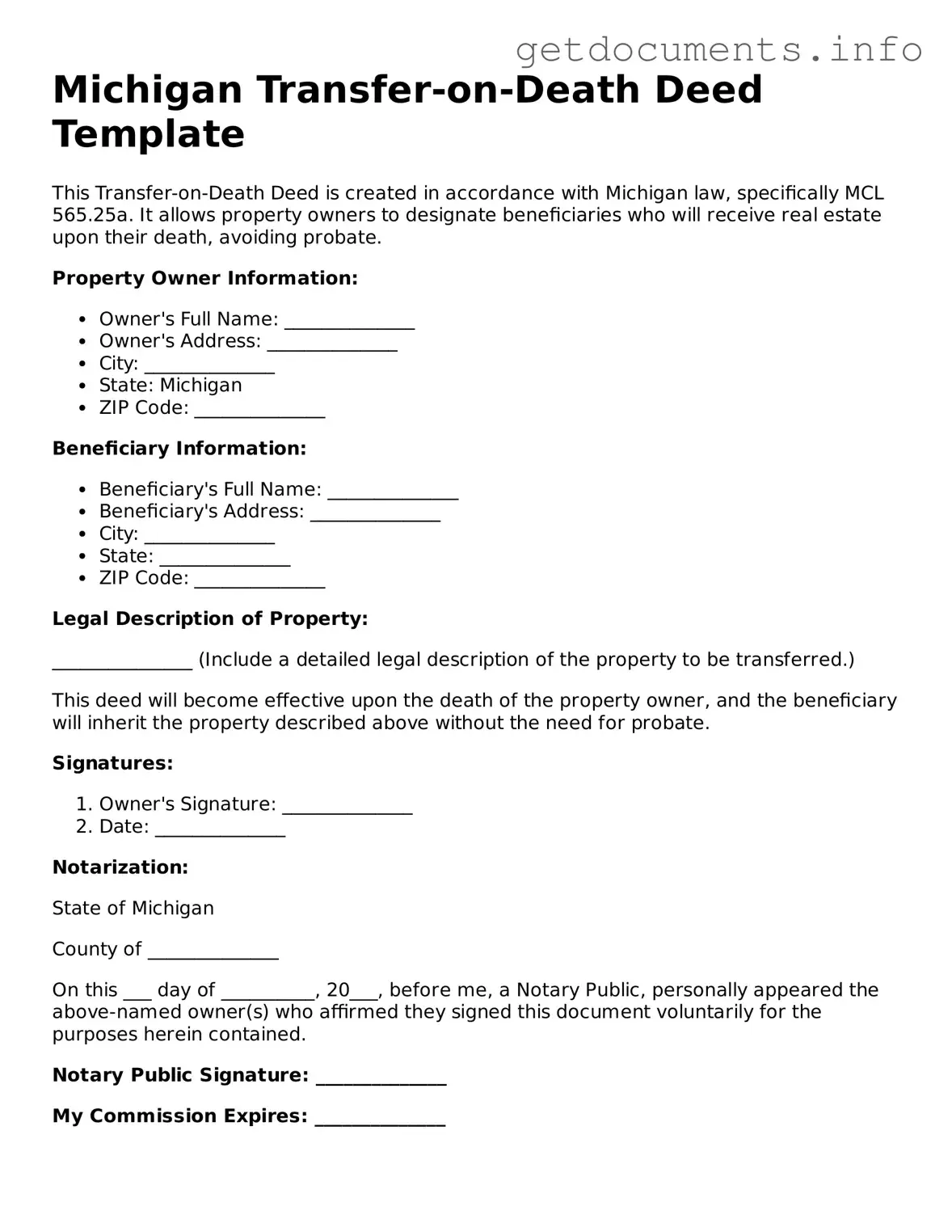Free Transfer-on-Death Deed Template for Michigan
The Michigan Transfer-on-Death Deed form allows property owners to designate beneficiaries who will receive their real estate upon their passing, without the need for probate. This straightforward tool simplifies the transfer process, ensuring that loved ones inherit property quickly and efficiently. For those interested in securing their property for future generations, filling out this form is a crucial step—click the button below to get started.
Access Transfer-on-Death Deed Editor
